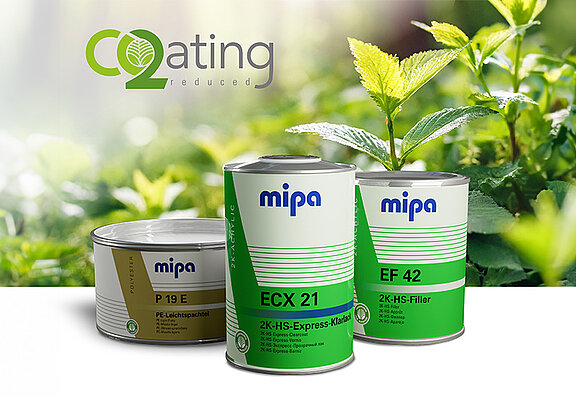The use of renewable raw materials in paint production makes a significant contribution to sustainability, as natural resources are conserved and the use of fossil raw materials is reduced. These renewable raw materials bind CO2 during their growth, which means that their processing into coatings has a significantly lower CO2 footprint compared to conventional methods.
MIPA is focussing on this advanced technology with a new product line. By using renewable raw materials such as camphene, cork flour, straw, rapeseed or sugar cane, the share of fossil raw materials in the respective products can be reduced by up to 50%. "At the same time there is no need to compromise on the quality and performance of the products," explains Benjamin Goldbach, Head of Mipa Application Technology.
The new PE lightweight filler Mipa P 19 E styrolfrei is made exclusively from natural and renewable fillers. The styrene-free formulation of the filler also ensures that it is particularly safe and health-friendly to work with. However, there are no differences in application compared to conventional polyester putties.
With the Mipa 2K-HS-Filler EF 42, MIPA presents a new high-build and easy-to-sand filler made mostly from renewable raw materials. Suitable for both full and partial coatings, the filler is particularly impressive because it prevents sagging and edge formation.
The new range is completed by the Mipa 2K-HS-Express-Klarlack ECX 21 - a clearcoat for excellent levelling and optimum flow. Thanks to the Mipa Express technology, the energy demand in the spray booth is also reduced, which in turn contributes to a better environment and reduces energy costs.
The products can be used with the Mipa 2K-HS-Härter EHS 25 and the Mipa 2K-MS-Härter EMS 25, which are also produced on the basis of renewable raw materials, as well as with conventional Mipa MS and HS hardeners. In this way, the changeover to the new product line can take place as cost-effectively and easily as possible without any disruption to the workflow. MIPA's aim is to offer an equivalent alternative to the standard product range and thus enable a seamless transition to more sustainable materials.

